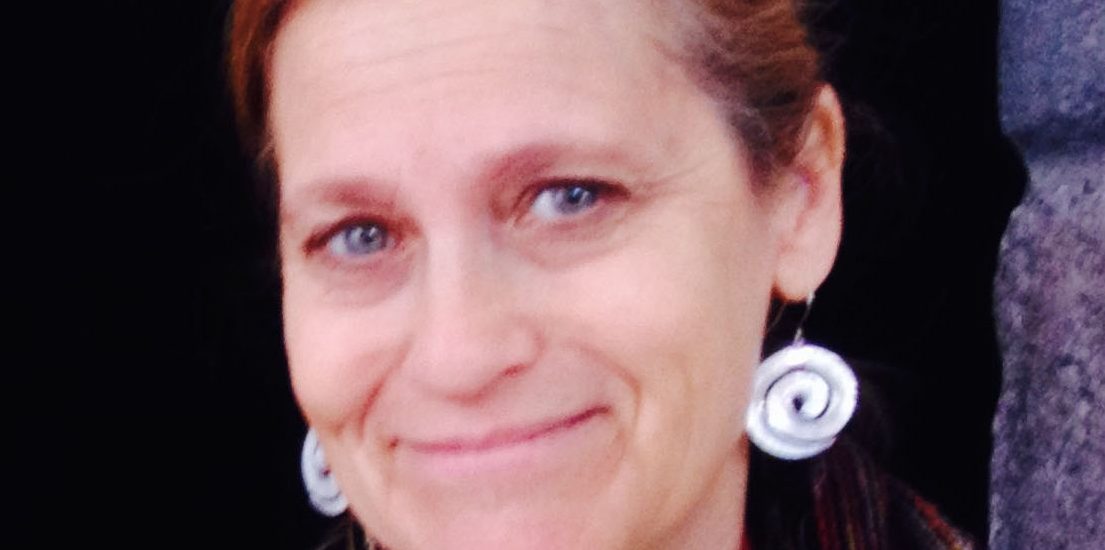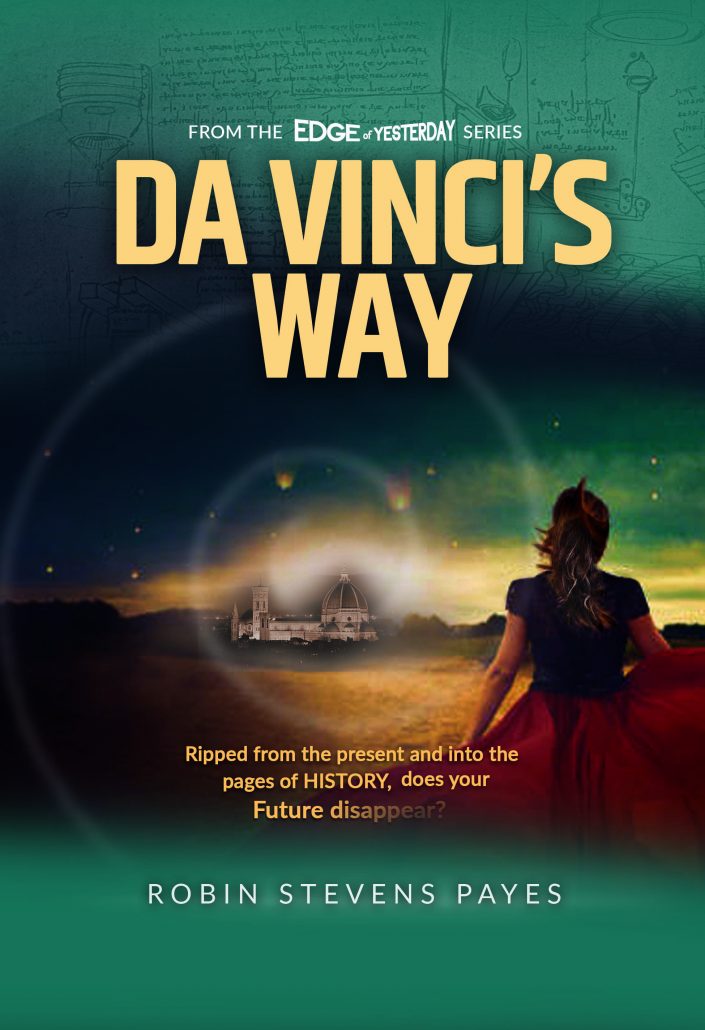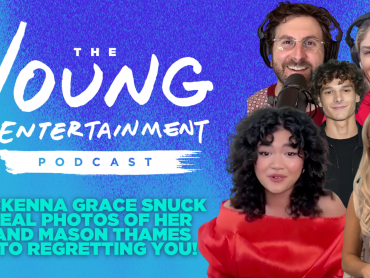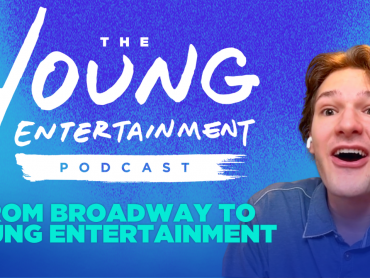Meeting Leonardo da Vinci in person isn’t your average middle-schooler’s dream science fair project. But Charley Morton isn’t your typical eighth-grader. Charley is mad about STEM, including science and math and, with her best bud Billy Vicenzo, she’s set on doing the impossible — finding da Vinci’s plans for a time machine and traveling back 500 years to meet her idol.
Robin Stevens Payes is firing up a love for science with the second book in her thrilling Edge of Yesterday science fiction series, DaVinci’s Way. The books are designed to open the minds of middle-grade readers to the adventure of learning about STEM/STEAM (science, technology, engineering, art and math) through storytelling. YEM spoke with Robin about the book and the importance of teaching readers about STEM.
Young Entertainment Mag: What made you decide to write about and raise awareness about the importance of STEM?
Robin Stevens Payes: When I started writing Edge of Yesterday, STEM wasn’t really a thing yet. (This was way back in the 1990s!) I was really more curious in knowing how would someone like Leonardo da Vinci, born in the 15th century, could envision and design machines for manned flight, or recognize air waves (the swirls in water and air in his notebooks are designs he also incorporates into his painting, in the curling hair of, for example, Ginevra di Benci), or that finding seashells in the mountains in Tuscany meant that, once upon an eon, there was an ocean covering them.
He would rob graves to find corpses to dissect. So he could incorporate correct anatomy into his paintings. And made remarkably advanced discoveries about, say, how the human heart works that we’re only beginning to appreciate today. His curiosity and his talent at depicting those ideas in fine detail in his sketches and paintings are what come down to us today as part of the amazing genius that is Leonardo. So he was interested in everything, and it occurred to me that the distinctions and stovepipes we’ve created in society and school—math at 9 am, English at 10 am, chemistry at 11 am and history at noon—are artificial. Everything is connected.
So in hindsight, this idea of STEM – or STEAM, which integrates the arts into STEM—is really an old idea that we’ve forgotten and need to reintegrate to make learning more relevant and appropriate to our 21st century reality. In fact, Leonardo (and my protagonist Charley) take it one step further to MASTERY: Math + Arts + Sciences + Technology + Engineering + Reflection (e.g. social and emotional skills and character) through the Yarns of Storytelling.
YEM: How did you first get interested in STEM?
Robin: See above. Plus, I am co-chair of Girls in Technology’s (GIT) CyberPatriot Girls committee for Women in Technology (WIT). We’ve created an annual celebration for GIT girls at the University of Maryland called STEM Trek. It’s a hands-on celebration of all things tech, and centered around a celebration of Leonardo as inventor of the future. We hope to inspire the girls who participate each year—middle and high schoolers—to embrace STEAM and MASTERY because they will be the ones who will be inventing our future, and we want them to be excited, and thoughtful, about how to bring about a better world, just as Leonardo combined art, science, design, medicine, geology, engineering, mapmaking and even music and set design into his inventions.
YEM: Tell us about “Da Vinci’s Way,” the latest book in your Edge of Yesterday series.
Robin: Da Vinci’s Way is a continuation of the first book, Edge of Yesterday where Charley gets to do a deep dive into this alien (to her eyes) world in which she’s landed: Renaissance Florence.
It looks remarkably like the pictures she’s seen of Florence today. And yet, the ideas and customs of the ways of people in that time are so different. People throw garbage out on the street and wash in the Arno River along with the slop from the butcher shops along the Ponte Vecchio; there’s really no “science” in the way we think of it; the churches are opulent and the people are dirt poor. And Church leaders prey upon the ignorance and superstitions of their congregants, mostly illiterate, by scaring them about End Times if they don’t behave as Church doctrine prescribes it; and, perhaps, worst of all in Charley’s mind, they don’t seem to know anything about spaghetti pomodoro, her favorite food!
What I love about this is we can see so much of ourselves in the characters and situations she encounters. After all, technology and knowledge may be more advanced today. But evolution is really slow. People really haven’t changed all that much.
YEM: How did you come up with the idea for “Da Vinci’s Way?”
Robin: After Edge of Yesterday, where Charley invents Leonardo da Vinci’s plans for a time machine for the middle school science fair and—oops! (spoiler alert) it works, I knew we’d have to follow her back in time. What does a smart (and smart aleck) teen girl do when she finds herself so far from her own time and ways. After all, she’s armed with knowledge of a distant future that even Leonardo, himself, would not dream possible. Does she try to fit in, or panic? And how does she feel about being so far from home? Away from friends and family with (possibly) no way of letting them know she’s okay? And are they okay without her? She has so many questions as, I hope, do readers!
YEM: What would you tell young readers to encourage them to try STEM related activities?
Robin: Keep an open mind. Try many different things. You don’t have to be perfect, just persistent. Don’t be afraid of failing—it’s the best way to learn. Be curious—that’s one of the major lessons I take from researching Leonardo for so many years. We can’t all have his artistic genius, but we all have the capacity to try, to learn. And to get a little better at anything we try through practice. And finally, do what you love. If you are doing something you’re passionate about, that makes you excited to get out of bed every day, that you get so engrossed in you have no idea how much time has gone by, you never know where that will lead you!
YEM: Where did the idea for the interactive Edge of Yesterday web platform come from? How did the web platform come to be?
Robin: Great question! As I was finishing writing the first book and wondering how I would bring it out into the world, a friend suggested tweeting it. I had no idea how that would work but tweet #storytelling was a new thing – this was before Instagram. So I started tweeting the book line-by-line, which I realized would, a) take forever, and b) be pretty boring to follow. I wanted to engage people in the story. So I started to engage in conversations and ask people where they thought Charley should time travel next, and asked a physicist to weigh in whether time travel was even possible. (His answer: yes, but it would have to be to an alternate universe to avoid changing history. Can you say #paradox?), so that opened up a whole new conversation.
And I realized it was the engagement that was interesting, and that it could lead to bigger conversations. That was the seed that started to building our own web learning platform to test out how to extend learning through story with interactive stories, quizzes, badges and puzzles. And it’s just kept growing from there into a world (many worlds and different historical time periods, in fact) all its own, that grows as the series expands!
YEM: Were there any books that inspired you to become more interested in STEM?
Robin: Many books have inspired my interest in STEM, starting perhaps with A Wrinkle in Time. But I am a science writer, too. So every time I write a story, I have to dig deeper, so I also read a lot of nonfiction. And, of course, I love history, and historical fiction in particular. I am now reading Sappho’s Leap by Erica Jong that has me back with this female poet and singer who lived in Ancient Greece. We have only fragments of Sappho’s poetry. But Jong weaves it into a great saga worth of Odysseus. Sort of a “heroine’s journey.” It’s beautiful the way she makes that world come alive and so relevant to us today. Even as we explore the mythology and archetypes of ancient times.
And storytelling that takes place in art, film and on television have inspired me along the way, as well. For example, understanding that art in the Renaissance revived the idea that the universe is based on some “sacred geometry” that started with the ancient Greeks links art and architecture and math together. Then, of course, there are some amazing STEM stories on TV and in film. Cosmos is one of my favorite series on the small screen. And even movies like “Hidden Figures” bring us understandings of STEM bringing to life the little-known stories of African American women who were integral to solving the mathematical problems behind manned space exploration!
My current obsession is the new season of Doctor Who. The thirteenth Doctor is a woman—yes! And we’re hoping to have a conversation with one of the writers for the new series on our site in the near future (but what is time, after all?! Does it go in a straight line? But I digress.)
I guess that goes back to your first question about my interest in STEM. It’s not just science, technology, engineering and math that inform my interests, though that is a part of it. It’s how STEM ties together with everything else to see, not just where we’re going, but where we’ve been. As the philosopher and writer Santayana famously said, “Those who cannot learn from history are doomed to repeat it.”
If we want to find new ways forward—and there are lots of problems that will require young people to put their minds together to solve, if humans are to survive on this planet—we must know what has worked in the past, and what hasn’t. And we need to think how our actions may have consequences for ourselves, our families, our society and our planet.
It’s a GIANT undertaking!
YEM: Finally, what do you believe are the next steps when it comes to increasing public interest in STEM?
Robin: Of course, I think that reading Edge of Yesterday and Da Vinci’s Way can open up some interesting conversations. Particularly among young people and their families. And “learning through story” on www.edgeofyesterday.com can provide some fantastic opportunities to expand on that. I am developing out a part of the site called Make the Story Yours. It’s a multimedia publishing platform for teens to express themselves and build a creative community together. We want teens to write, draw, design, make, film, compose and perform. And submit them to the site where we will curate their submissions for the possibility to be published!
And, use the hashtag #eoymystory on social media. We’ll be compiling some of the most innovative expressions on the Edge of Yesterday site.
I also run writing and creativity workshops: check our calendar for a time and place near you.
And finally, we are currently packaging up our web content and the books to develop STEAM enrichment programs that we will begin rolling out in California in 2019, the 500th anniversary of Leonardo da Vinci’s death, by the way—a perfect time to celebrate his MASTERY and develop your own! Check back as we expand on all these activities in the next year or so. And watch for our release of Book 3 of the Edge of Yesterday series, Saving Time . . . coming soon!





